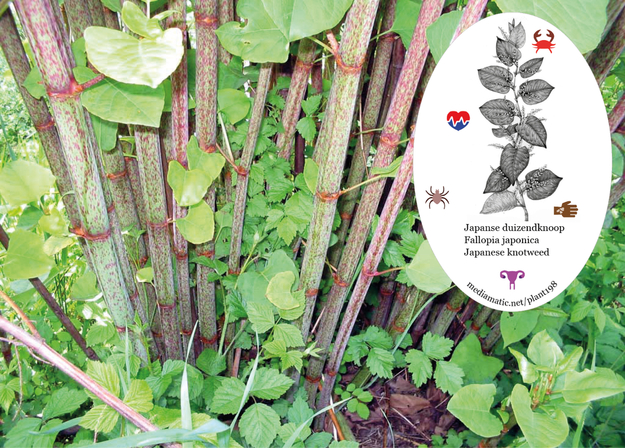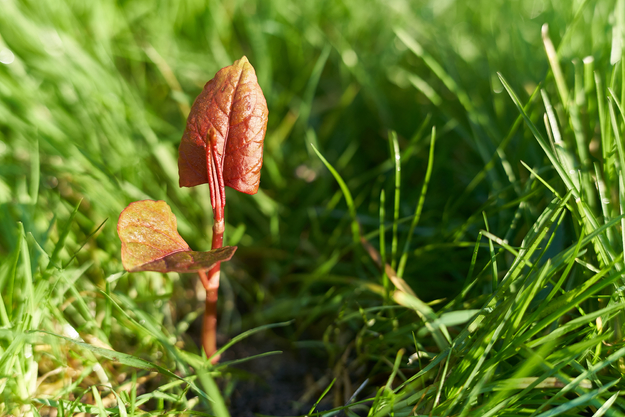Cooking
Japanese knotweed has a similar taste to rhubarb and celery, but with a more earthy flavor. You can eat the leaves, shoots, rhizomes, and roots. Young shoots in spring can also be cooked and eaten as an asparagus substitute. They have an acidic flavor and can also be used as a rhubarb substitute in pies, fruit soups, jams, etc. As the shoots cook, or even if they're exposed to water, they turn slimy, quickly. Cooking mellows the slime, and the stems disintegrate during cooking like rhubarb, but with a stringy texture that can be unpleasant, especially if the stems are older. Peeling the stems will help remove the stringy fibers. Older stems and shoot tips can also be cooked and eaten although they taste like a mild version of rhubarb. The seeds can be eaten raw or cooked but they are rather small and fiddly to utilize. The seed can also be ground into a powder and used as a flavoring and thickener in soups or can be mixed with cereals when making bread, cakes, etc. Knotweed goes well with fall fruits like apples, pears, and grapes. You can also use this plant to make pickles, ice cream, puree, mousse, and fruit leather. You can find here a recipe utilising Knotweed.
Medicinal uses
The Knotweed root and leaves can be used for one or many of the following: anti-inflammatory, depurative, diuretic, emmenagogue, emollient, fever reducing, stomachic, vulnerary. Knotweed is the plant with the highest concentrations of Resveratrol, which acts like antioxidants, and has been used as a folk remedy for a number of ailments, including Lyme disease. It is also used in the treatment of women's complaints. A decoction is used in the treatment of burn injuries, boils and abscesses, poisonous snakebites, acute hepatitis, appendicitis, traumatic injuries and menstrual irregularities. The leaves can be crushed and applied externally as a poultice to abscesses, cuts etc, whilst the dried roots can be ground into a powder and applied externally. Extracts of the plant have shown anti-tumor activity.
Building material
The range of application varies depends on the size and thickness of the skin. The thicker stems can be used to make strips for weaving. For the branches of the stems and the thinner stems, they can be use as fire starters, isolation panel applied in furniture, MDF material and textiles.

